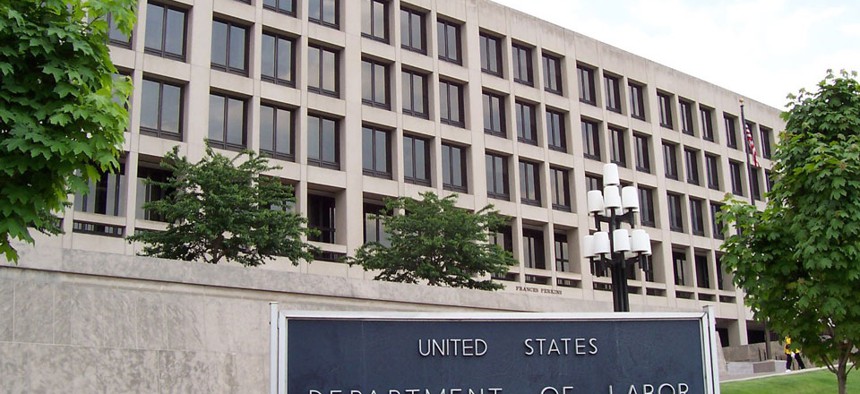Delayed Jobless Report Risks Prolonging Economic Uncertainty
Furloughed Labor Department analysts would need several days to finalize data.
The heavily furloughed Labor Department’s inability to put out its monthly report on joblessness is manageable only in the short run and risks long-run damage to key economic measures, according to economists interviewed by Government Executive.
The monthly unemployment numbers, based on surveys of households and employers and watched avidly by business and public officials as a barometer of economic health, are produced by the Bureau of Labor Statistics. The latest report was due out on Oct. 4, but of the bureau’s 2,409 employees (supplemented by some 500 contractors), only three are on the job during the government shutdown, according to Labor’s shutdown guidance.
“The shutdown hit when the analysts were three days from releasing the report, so they would probably need about that time period to prepare the final report,” said Keith Hall, who was BLS commissioner from 2008-2012 and is now a senior research fellow at the Mercatus Center at George Mason University. “They have pretty much collected all the data from household surveys, but they need to process it and put it in tables.”
More problems may arise as the shutdown continues, Hall added, because the current, or second week of the month, is when the data gatherers “would normally be conducting the next household survey if the government had not closed, which starts to impact next month’s data. Perhaps worse, data quality can be affected.”
While the report’s broad unemployment rate garners the most news coverage, industries also focus on the detailed tables affecting their own sector, Hall said. “In terms of current economic conditions, nothing’s better than the jobs numbers if you want to see how your industry’s doing, whether employment is picking up. We know it impacts financial markets.” The Federal Reserve relies on the unemployment rate as a factor in deciding whether to continue its current bond-buying stimulus, he noted.
Chad Moutray, chief economist for the National Association of Manufacturers, said, “Economists in particular are looking for trends and signs of a manufacturing uptick” and can fall back on the private-sector Automated Data Processing unemployment rate calculated by Moody’s. “But the lack of data over the past two weeks has really hamstrung us in our ability to say whether the economy is picking up or slowing down,” he said.
The NAM-member chief executive officers he recently met with have “long time-horizons,” Moutray added. “For the most part businesses are looking at government data as a gauge to see whether what they see in their own business and hear from customers jibes. If we went on a prolonged period without government data, they would be more left in dark.” But such uncertainty, while “disappointing, is not the end of the world,” he said. “They’re not going to stop hiring because they already have put those plans in place. The more pressing challenge is frustration with Washington over ending the shutdown.”
Robert J. Shapiro, the undersecretary of Commerce for Economic Affairs in the Clinton administration and now chairman of Sonecon LLC, said the harm from the delayed government unemployment number “depends on what the number is. There would be a larger market reaction if the BLS number when released was significantly different from the private sector’s.”
Shapiro added: “The larger question is to what extent the shutdown is interfering with the collection of data that goes into all the other reports.” Those could include the components of the gross domestic product, for example, some of which lack a private-sector substitute.
“We don’t know the extent to which in fact the collection is not going on,” he said. “If there’s collection but no analysis, an inability to get basic elements of the GDP number would introduce new uncertainties into lots of economic decisions. This also would reinforce the already large effect of the games the House is playing with the nation’s economy, a signaling effect that government is less reliable.”
The Labor Department could not be reached for comment.




